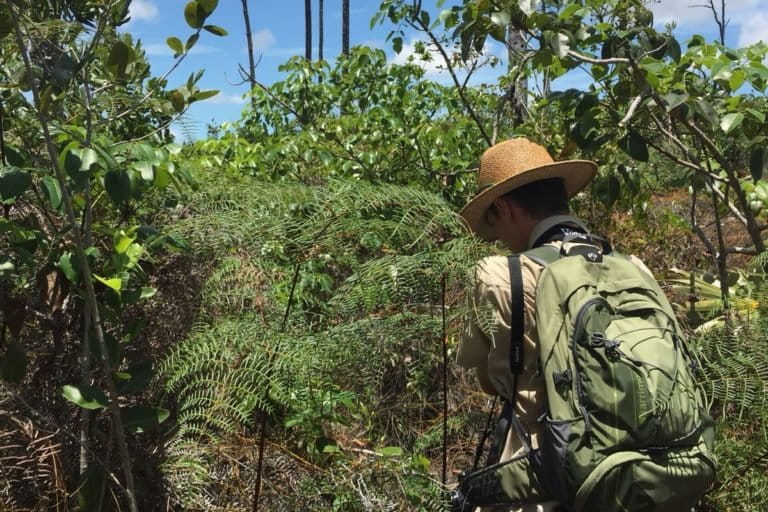- The Bahama nuthatch (Sitta insularis), known only from a small pine forest on the island of Grand Bahama, some 84 kilometers (52 miles) east of Palm Beach, Florida, was thought to have gone extinct after Hurricane Matthew in 2016.
- But two recent, independent expeditions have yielded sightings of the bird again.
- Only a handful of individuals have been spotted, though, and researchers fear that chances of reviving the species’ population look bleak.
Researchers have finally spotted the Bahama nuthatch, an endangered bird that they thought had gone extinct following a devastating hurricane in 2016. Things are still not rosy for the bird, though: the researchers fear there might be just a handful of individuals of the species left.
“The photographs clearly show this distinctive species and cannot be anything else,” Michael Parr, president of the American Bird Conservancy, said in a statement. “Fortunately this is not a hard bird to identify, but it was certainly a hard bird to find.”

The Bahama nuthatch (Sitta insularis), known only from a small pine forest on the island of Grand Bahama, some 84 kilometers (52 miles) east of Palm Beach, Florida, has seen a progressive decline in its population over the years, driven mainly by destruction of the pine forest it calls home, fires and hurricanes. Its recorded numbers have never been very high: a few hundred individuals were recorded in 2004, while only 23 were spotted in a 2007 survey.
But researchers feared the worst when Hurricane Matthew, a deadly category 5 Atlantic hurricane, caused widespread damage in the Bahamas in 2016. Searches for the bird after the hurricane yielded no sighting at all, pointing to the nuthatch’s possible extinction.
However, recent expeditions have led to the sightings of the bird once again, renewing hope for the species.
To look for the bird, Matthew Gardner and David Pereira, master’s students at the University of East Anglia (UEA) in the U.K., walked some 700 kilometers (435 miles), covering 464 survey points across 340 square kilometers (131 square miles) of pine forest on the island of Grand Bahama. Around the same time, a team from the University of The Bahamas-North, led by researcher Zeko McKenzie and supported by the American Bird Conservancy, set out on their own independent survey.
“We had been scouring the forest for about six weeks, and had almost lost hope,” Gardner said. “At that point we’d walked about 400 km [248 miles]. Then, I suddenly heard its distinctive call and saw the unmistakable shape of a Nuthatch descending towards me. I shouted with joy, I was ecstatic!”

Overall, Gardner’s team spotted the nuthatch on six occasions and even photographed one individual, while McKenzie’s team independently spotted the Bahama nuthatch five times, including two birds together.
“Our search was extremely thorough but we never saw two birds together, so we had thought there might only be one left in existence,” Gardener said. “The other team have reported seeing two together so that is promising. However, these findings place the species on the verge of extinction and certainly amongst the world’s most critically endangered birds.”
Gardner added that when bird numbers crash, “any remaining birds are usually male.”
The UEA team thinks that given the Bahama nuthatch’s low numbers, chances of reviving its populations look bleak, especially because the exact drivers of the bird’s decline aren’t clear yet.
“But it is still absolutely crucial that conservation efforts in the native Caribbean pine forest do not lapse,” said Diana Bell, a conservation biologist at UEA, “as it is such an important habitat for other endemic birds including the Bahama swallow [Tachycineta cyaneoviridis], Bahama warbler [Setophaga flavescens] and Bahama yellowthroat [Geothlypis rostrata].”
McKenzie was slightly more optimistic about the nuthatch’s prospects.
“Although the Bahama Nuthatch has declined precipitously, we are encouraged by the engagement of conservation scientists who are now looking for ways to save and recover the species,” he said.
